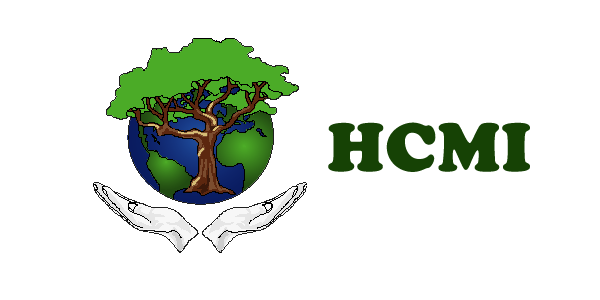Herpes
It is estimated that over 90% of Americans have herpes. More than 40,000 new cases of herpes are diagnosed each day in America alone, that is over 15,000,000 new herpes infections per year! The number of people infected with herpes has reached epidemic proportions. The herpes family of viruses includes 8 different viruses that affect human beings. The viruses are known by numbers as human herpes virus 1 through 8 (HHV1 - HHV8).
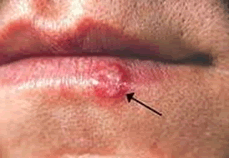
Human herpes virus 1 (HHV1) is also known as herpes simplex virus 1 (HSV1). It is typically the cause of cold sores around the mouth. HHV1 can also lead to infection in the genital area causing genital herpes usually through oral-genital contact, such as after oral sex. HHV1 infections are contagious and are usually spread from skin-to-skin contact with an infected person through small breaks in the skin or mucous membrane. The HHV1 virus is more likely to be spread through things like sharing eating utensils, razors, and towels from a person who has an active lesion.
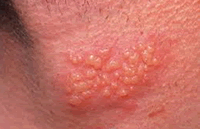
Human herpes virus 2 (HHV2) is also called herpes simplex virus 2 (HSV2). It typically causes genital herpes, a sexually transmitted infection. However, it can also cause cold sores in the facial area. Similar to HHV1, the HHV2 infection is contagious and is spread by skin-to-skin contact. The main route of transmission is through sexual contact, as the virus does not survive very long outside the body.
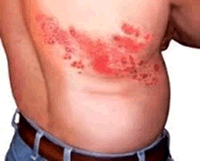
Human herpes virus 3 (HHV3) is also called varicella-zoster virus and causes chickenpox. HHV3 can also cause a recurrent virus infection of the skin, which is called herpes zoster or shingles. Shingles occurs when dormant varicella-zoster virus from an initial bout of chickenpox becomes reactivated. The lesions generally appear in a band-like or belt-like pattern occurring on one side of the body and are often accompanied by itching, tingling, or even severe pain. Healing usually occurs in 2 to 4 weeks, but the scars may remain. Postherpetic neuralgia is a complication of shingles where the pain associated with the infection can persist for months and even years. Most people who experience shingles once do not experience it again.

Human herpes virus 4 (HHV4) is also known as the Epstein-Barr virus. It is the major cause of infectious mononucleosis, or "mono" - the "kissing disease." It is a contagious infection and is transmitted through saliva. Coughing, sneezing, or sharing eating utensils with an infected person can pass the virus from one person to another. About half of all five-year-old children and 90 to 95 percent of adults have evidence of previous infection. It is associated with particular forms of cancer, like Hodgin's lymphoma, especially in those with compromised immune systems. There is evidence that infection with the virus is associated with certain autoimmune diseases, especially dermatomyositis, systemic lupus erythematosus, rheumatoid arthritis, Sjögren's syndrome, and multiple sclerosis.
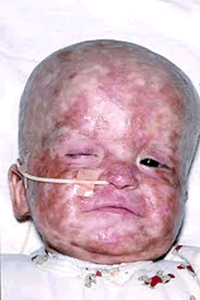
Human herpes virus 5 (HHV5) is the official name of cytomegalovirus (CMV) and is the cause of mononucleosis. In people with healthy immune systems, the virus may not cause any symptoms. It can be sexually transmitted, can cause problems to newborns, and can cause hepatitis. CMV can be transmitted through sexual contact, breast-feeding, blood transfusions, and organ transplants. CMV infection is one of the most difficult complications of AIDS. Symptoms include diarrhea, severe vision problems including blindness, infections of the stomach and intestines, and even death. For a virus that barely causes a problem in most people with healthy immune systems, it can be incredibly deadly in people with damaged immune systems, such as people with AIDS.
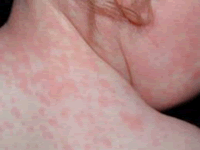
Human herpes virus 6 (HHV6) is a recently observed agent found in the blood cells of a few patients with a variety of diseases. It causes roseola (a viral disease causing high fever and a skin rash in small children) and a variety of other illnesses associated with fever in that age group. This infection accounts for many of the cases of convulsions associated with fever in infancy (febrile seizures).
Human herpes virus 7 (HHV7) is even more recently observed and is closely related to HHV6. Like other human herpes viruses, HHV6 and HHV7 are so common that nearly all humans have been infected at some point, usually early in life. HHV7 can also cause roseola, but it is not clear what other clinical effects that this virus causes.
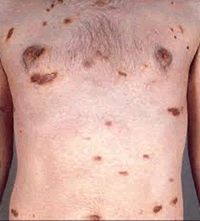
Human herpes virus 8 (HHV8) was recently discovered in certain tumors called Kaposi's Sarcoma (KS). These tumors are found in people with AIDS and are otherwise very rare. KS forms purplish tumors in the skin and other tissues of some people with AIDS. It is very difficult to treat with medication. HHV8 may also cause other cancers, including certain lymphomas (lymph node cancers) associated with AIDS. The fact that these cancers are caused by a virus may explain why they tend to occur in people with AIDS when their immune systems begin to fail. The discovery also provides new hope that specific treatments for these tumors will be developed to target the virus.
